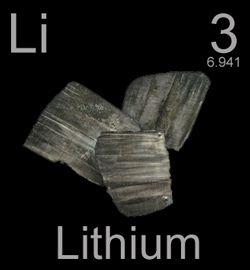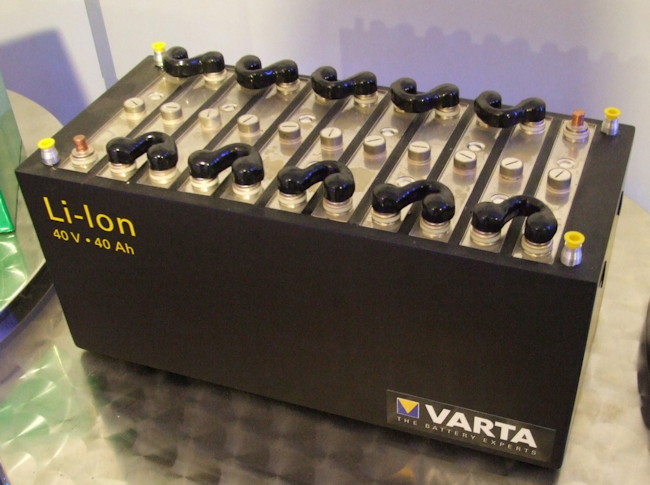
Now Tesla has started buying up Nevada and building its battery gigafactory, with competing gigafactories following suit and competing electric vehicle (EV) manufacturers all throwing billions at this fast-moving market that no one has been able to keep up with.
Not only has the EV taken its first major leap into the mainstream—most notably indicated by Tesla’s phenomenal advance sales of its affordable Model 3—but it’s gone beyond the mainstream.
Electric vehicles will be the rule rather than the exception; and lithium the number one commodity of our time.
Germany has mandated that all new cars registered in the country will have to be emissions-free by the year 2030. And to make this a reality, the government has cut a deal with automakers to jointly spend $1.4 billion on incentives to boost electric car sales. They’re hoping to sell 500,000 EVs by 2020. So they’re subsidizing the EV industry, and giving lithium an automatic boost at a time when it doesn’t even need it.
Norway is following suit as well, working on legislation to outright ban the sale of gasoline-powered cars by 2025.
And in the U.S., the Wall Street Journal now reports that the mainstream popularity of electric cars will reduce gasoline demand by 5% to 20% over the next two decades, assuming that EVs gain more than 35% market share by 2035.
While our energy revolution got off to a slow start, better cars at more affordable prices, tighter air-pollution regulations and a growing global desire to halt climate change have pushed the revolution over the edge. It’s all powered by lithium, which has always enjoyed steady demand just from our consumer electronics cravings—but is now about to go where no mineral has gone before.
Tesla Motors (NASDAQ:TSLA), Nissan Motor Co. (OTC:NSANY), Hyundai Motor Co. (OTC:HYMTF) and Volkswagen AG (ETR:VOW3) are all putting out EVs, and Ford Motor Co. is planning to invest $4.5 billion over the next four years to develop an amazing 12 new EVs and hybrids, according to the WSJ.
“Electric vehicles are one of the biggest market disruptors in centuries—which makes lithium the commodity that gives us the most reason to be bullish,” Oroplata Resources CEO Craig Alfred told Oilprice.com.
Let the Hoarding Begin
Metal hoarding and demand is driving up prices to $15,000 per ton or higher on the spot market, vs. only $5,000 a couple years ago.
In 2014, lithium prices grew 20%. And in 2015 battery grade lithium spot prices in China surged from $7,000 per ton in the middle of the year to a market-shocking $20,000 per ton earlier this year.
Market consumption could triple from 160,000 metric tons to a staggering 470,000 metric tons by 2025. And even if the EV market share increased by only 1%, it would raise lithium demand by 70,000 metric tons—which is about half of today’s demand.
This has made the commodity—described by Goldman Sachs as the “new gasoline” a prime target for the break-out of junior miners who are keen to get in on what has traditionally been an oligopoly. These juniors will be just as disruptive to the market as EVs themselves.
In the race to secure new lithium supply acreage, the juniors are relentless, and the newest junior on the scene is Oroplata Resources, Inc., which recently staked its own claim in Tesla’s backyard, with the 100%-owned Western Nevada Basin project.
Close to home—and close to the North America EV center stage—there’s nowhere else to be but Nevada, which has the only brine-sourced lithium in the country and has strategically positioned itself to be the front line of the American energy revolution.
The ‘gigafactory’ state is now the scene of the hottest activity since the California gold rush, and the new entrants are scrambling to stake their claims around the only producing lithium mine in America–Albermarle’s Silver Peak Mine.
According to Fortune magazine, by some estimates the Silver Peak Mine alone “holds the promise of even greater untapped riches of the valuable metal buried beyond the mine.”
The juniors are betting that Nevada’s Clayton Valley Basin holds a lot more lithium than we have ever imagined, and geology may just prove them right.
“Never before has there been commodity supply that is this fantastically tight,” says Alfred of Oroplata Resources, which has just confirmed the presence of “highly anomalous lithium values” from its Western Nevada Basin project, right in the heart of the state’s lithium ground zero. “Right now it’s all about getting it out of the ground first and becoming the next suppliers of a revolution that’s already unfolding at a phenomenal pace.”
Musk would agree. When he cut the ribbon on the new gigafactory he noted that he alone would use up most of the world’s existing lithium supply.
“In order to produce a half million cars per year…we would basically need to absorb the entire world’s lithium-ion production,” Musk said.
And that’s just one man, one brand of EV and one gigafactory. The race is indeed on to be the first to get at new lithium supply—and there is every reason to be bullish on the new juniors who will disrupt the entire market.
You might also like:
Source: This article originally appeared here and has been reprinted by permission.
By James Stafford of Oilprice.com



